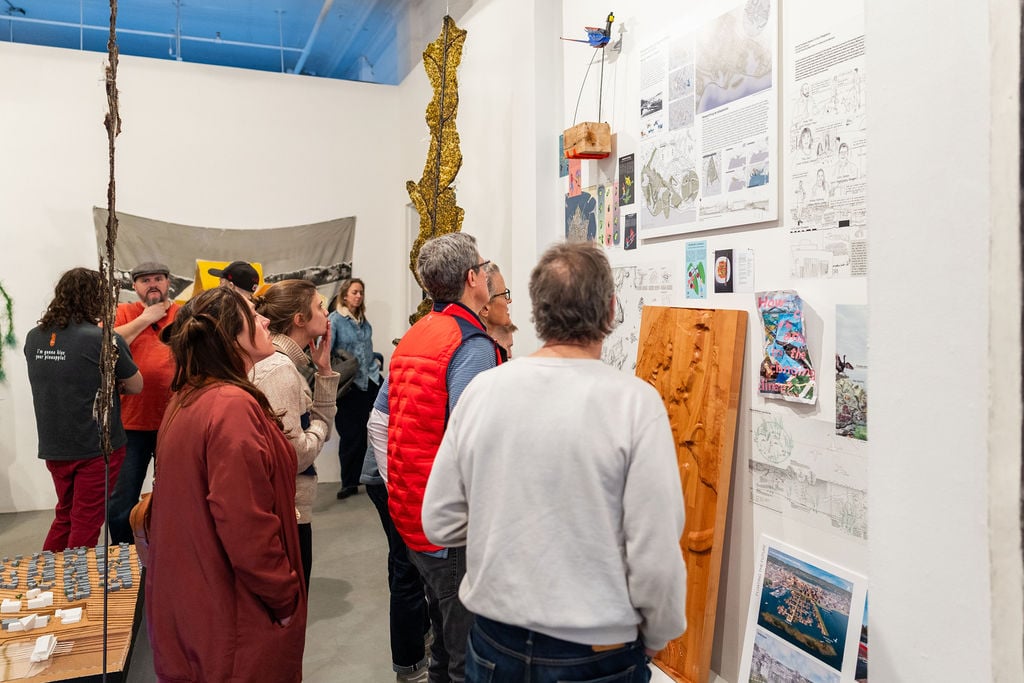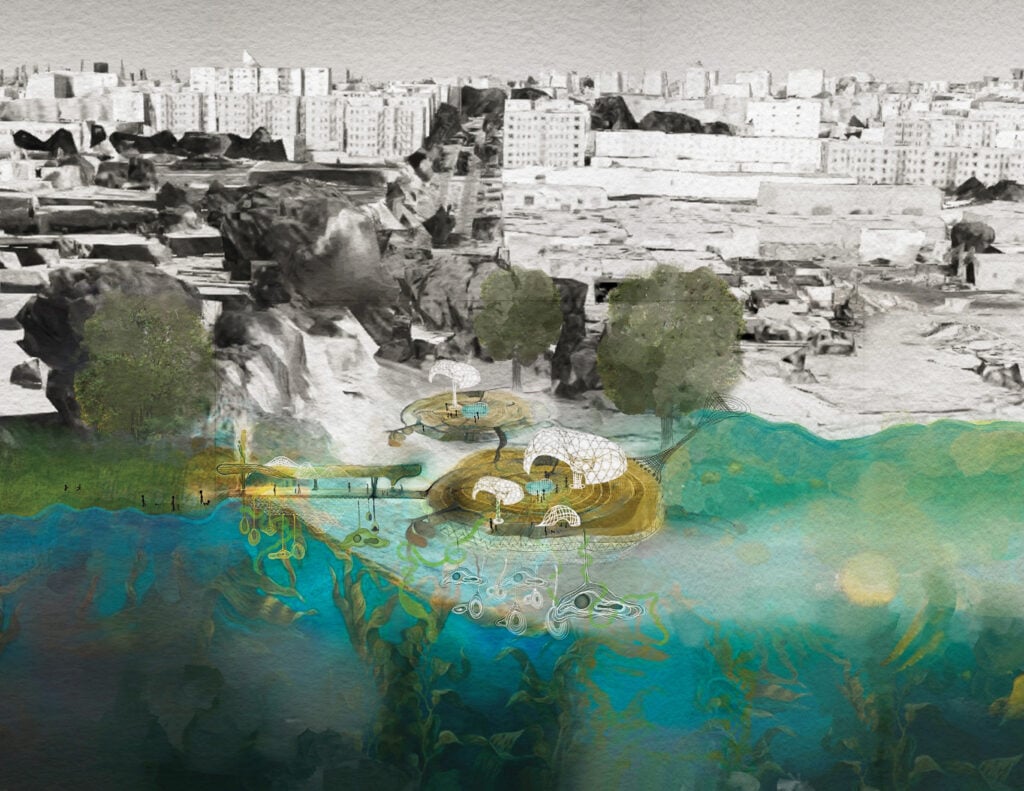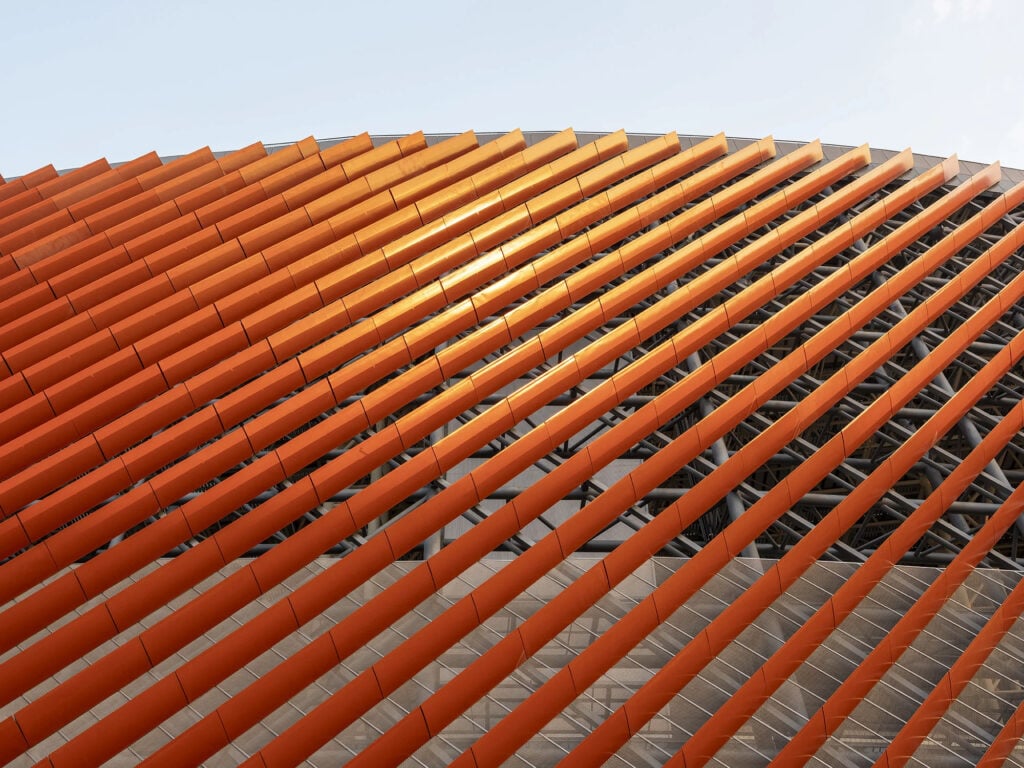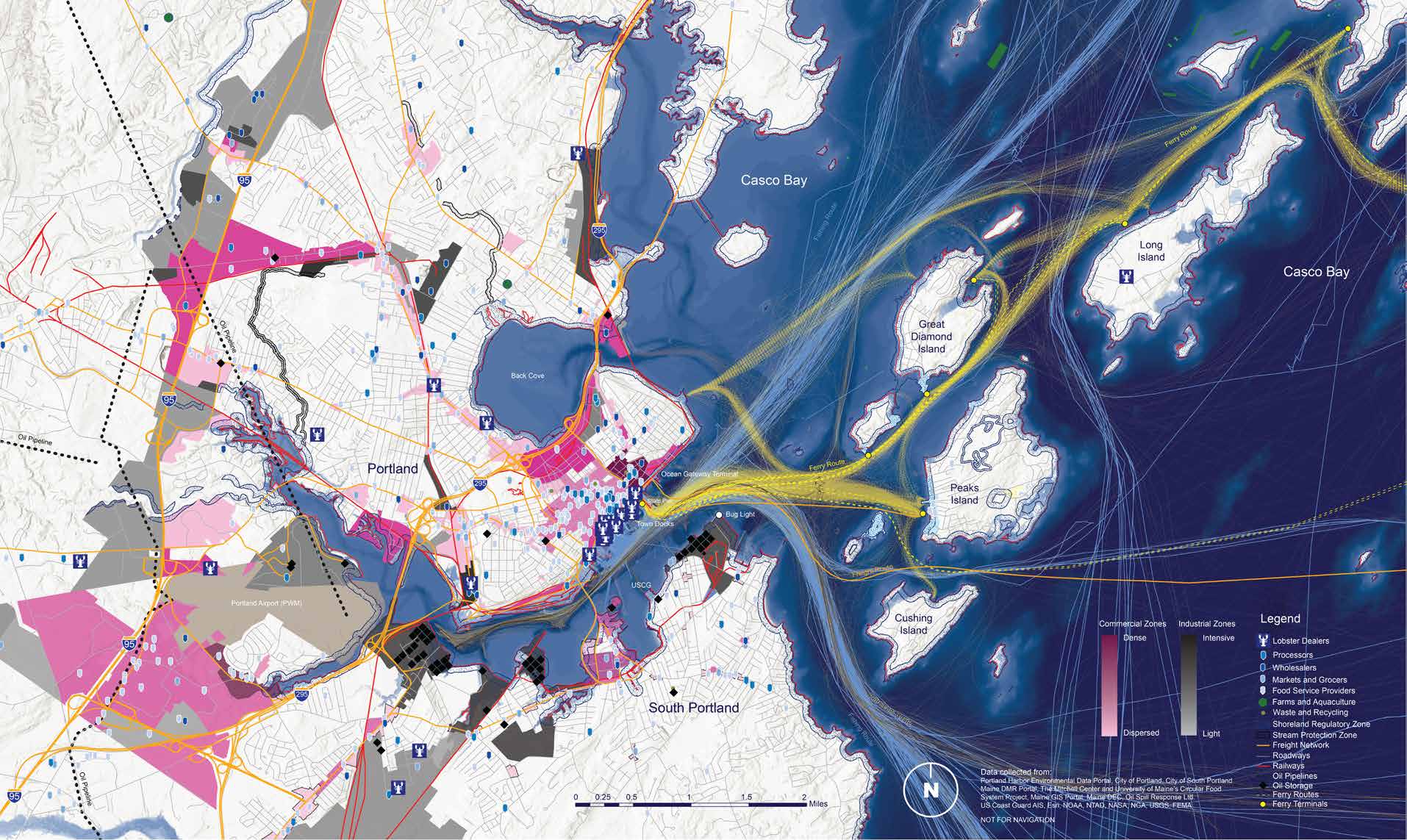
April 23, 2025
Envision Resilience Participants Design for Vulnerable Coastlines
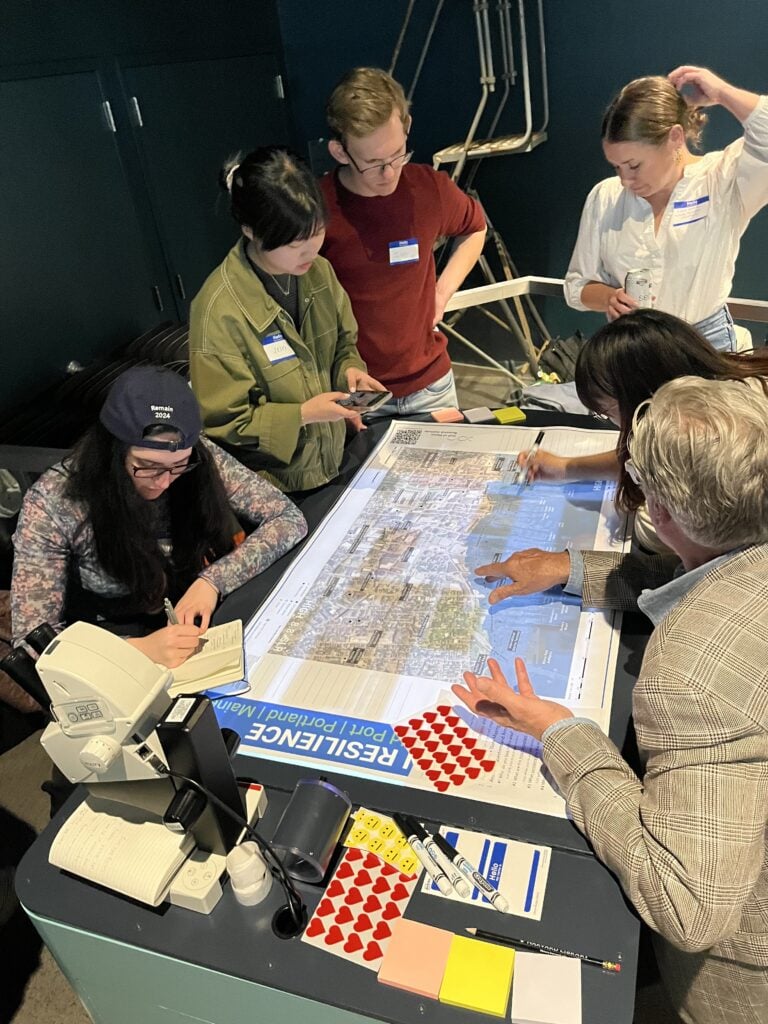

The roster of participating schools changes each year. The 2024 cohort comprises teams from Cornell, Harvard, Yale, University of Buffalo, University of Maine at Augusta, University of Michigan, University of Virginia, and University of Toronto.
“It’s all about communicating to these communities how they might reimagine futures under rising sea levels, urban heat, increasing stressors on housing and economies and the like. We use design to catalyze those conversations,” says Claire Martin, Envision Resilience’s executive director. To those ends, students and faculty consult with civic leaders, elected officials, and other community stakeholders to ensure this speculative design exercise reflects each city’s collective concerns.
The cities of Portland and South Portland, which share common bodies of water, represent critical historical and industrial centers in Maine. They also stand on tenuous ground. The Gulf of Maine is warming faster than 99 percent of the world’s oceans, owing to a distinct meeting point of opposing currents from the north and south. This makes sea level rise and coastal resilience particularly acute concerns.

“Maine is very much its own place,” says Charlotte Devine, a third-year Master of Landscape Architecture student at UVA. “I believe in letting the site itself drive the design, both through the people you interact with and the physical phenomena you observe.” The Virginia team examined the history of Portland’s beloved (and heavily developed) Back Cove neighborhood, once a sunken estuary and tidal exchange site between Casco Bay and the Fore River. Operating from various vantage points (e.g., civic infrastructure, aquaculture, affordable housing, and more), UVA students conceived of ways to “invite controlled flooding by elongating the basin,” Devine says, while also using pedestrian networks as assets. “We want to reconnect people to the water while recognizing the agency of water,” she says.
Welcoming the water, in a manner of speaking, was likewise a prevailing concern of the University of Michigan team. Eyeing the vulnerable South Portland coastline, which has long been a vital hub for petroleum shipping and storage, students from the school’s landscape architecture program devised plans for floating, mobile breakwaters that would “rise and fall with the water line” and “dissipate wave energy gently instead of using blunt force” like that of a traditional seawall. This measure would, in theory, protect sea life habitats and preserve opportunities for more public green space, particularly around the massive oil tanks that populate hardscaped coastline on the city’s northern edge. According to Daniel Lim, a third-year graduate student, “We’re trying to solve a real problem … we really leaned into a design solution that was potentially inspiring and prepared for a future that even the community may not have considered.”

For Sam Rimm-Kaufman, a graduate student in Cornell’s landscape architecture program, the program’s community engagement imperative was key. With a focus on both cities’ working waterfronts and possible future as a green energy hub, Rimm-Kaufman says he wanted to see the community at work and develop a better understanding of how different people perceived this idea of resilience. “I ended up talking to everyone from city planners to random passersby to get a broad demographic of voices … so, it wasn’t the same folks saying the same things over and over.” This approach is reflected in his own presentation, which features dozens of hand sketches by Rimm-Kaufman of various people and places he encountered, along with several first-hand quotes. One such individual, South Portland’s economic development director Bill Mann, told him, “Others talk about retreat, but I want to talk about resilient transition of existing structures.”
The work of Envision Resilience continues, and by all accounts is expanding. Last February, the studio announced it was spinning off from Remain to become an independent organization, now headquartered in Boston.
Currently, a traveling (and ever-changing) exhibition of the 2024 cohort’s design work, curated by local artist Brian Smith, is entering its third and final rendition at Portland’s SPACE Gallery, entitled “Envision Resilience: Shifting Tides and Evolving Landscapes,” on view through April 26. (Previous exhibitions were held at Portland’s and South Portland’s public libraries.)
“This collection reflects a shared desire to connect with a changing world,” said Smith in a recent press release, “and shows that connection can lead to a more imaginative, resilient future.”

Would you like to comment on this article? Send your thoughts to: [email protected]
Latest
Profiles
Zoha Tasneem Centers Empathy and Ecology
The Parsons MFA interior design graduate has created an “amphibian interior” that responds to rising sea levels and their impacts on coastal communities.
Viewpoints
How Can We Design Buildings to Heal, Not Harm?
Jason McLennan—regenerative design pioneer and chief sustainability officer at Perkins&Will—on creating buildings that restore, replenish, and revive the natural world.



